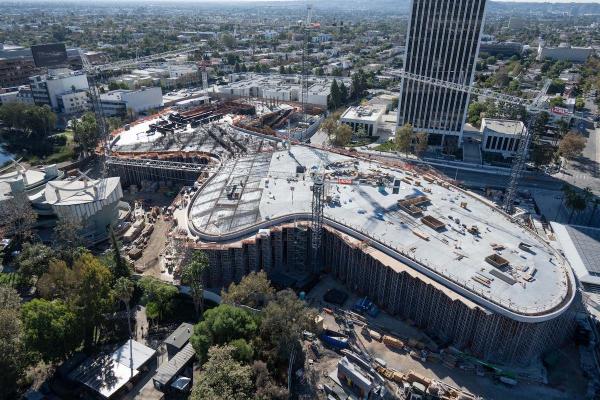As construction continues on LACMA’s David Geffen Galleries, pedestrians on Wilshire Boulevard are able to catch a glimpse of the scaffolding coming down to reveal the beautiful curves of the building’s roof, exhibition level, and sunshade. One of the many noteworthy elements of the museum’s future home for the permanent collection is its use of architectural concrete, which makes up both its structure and aesthetic finish. We had the opportunity to talk to Chris Bell, project executive at Clark Construction, the general contractor, to learn more about the characteristics of architectural concrete, how it fits in with the vision of architect Peter Zumthor, and how it will impact the final form of the David Geffen Galleries.
Chris, to start out, could you tell us what architectural concrete is?
It's not just the structural element that holds up the building and allows people to move safely through a space. When you take that structural requirement that every building shares and try to make it something pleasing or aesthetically beautiful—that’s architectural concrete. Concrete is usually done in a very rough way in a traditional building, where it's eventually covered up—you don't see it, generally. The challenge with architectural concrete is to build the structure using many of the same building materials, but do so in a very careful, methodical, process-oriented way such that the outcome is controlled and you get a visually appealing, beautiful concrete product at the end of the day.
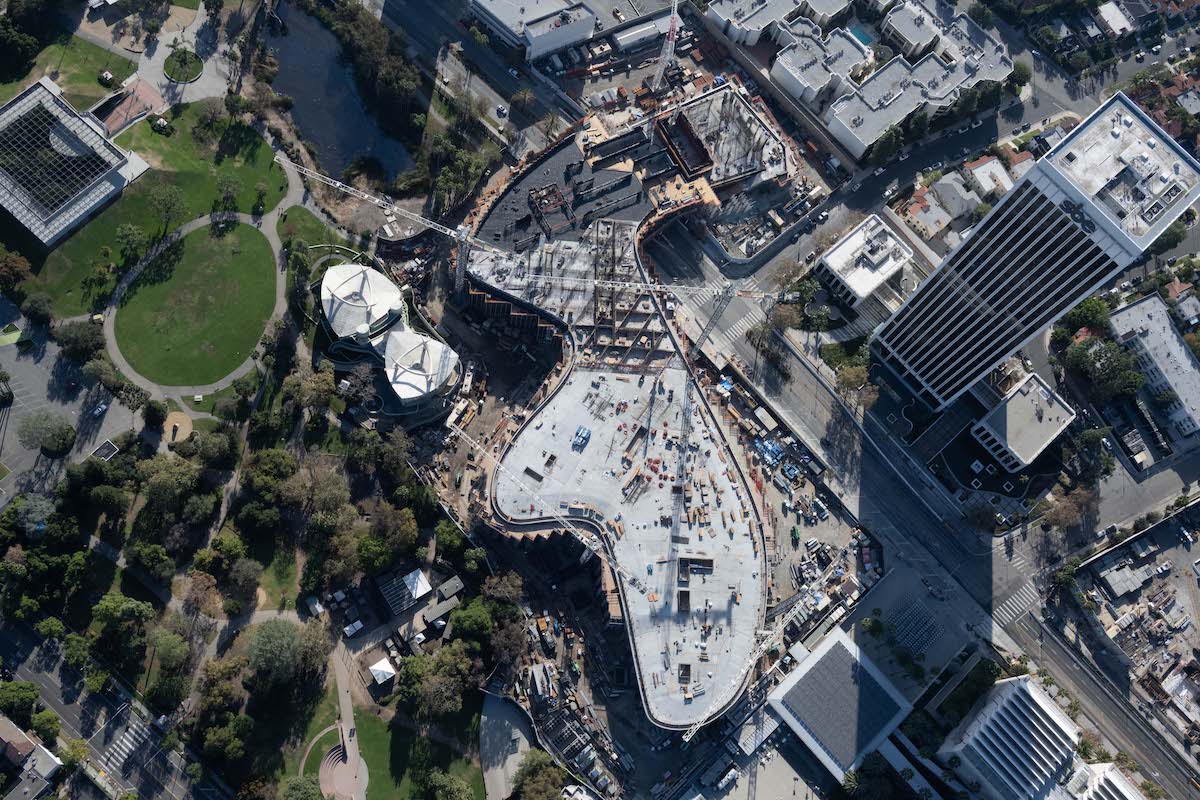
The building feels like a concrete sculpture. I suppose that’s part of the beauty of using architectural concrete.
Yes, Peter, as an architect, is known for using more raw and honest building materials. He's known for concrete. He's known for glass. He's known for his use of wood and shadow, playing with the geometry of the building. The main finish of this building is architectural concrete and glass, along with bronze accents and various other accents, but those are the primary building elements and materials that Peter is known for and that we're working with. In addition, the overall geometry is meant to evoke the tar pits, very amoebic in shape, so it's been exciting to see that come to life.
What were some of the challenges in delivering the architectural concrete?
Architectural concrete is always a challenge, and that starts on day one. Concrete as a building material is a living, breathing thing. You have to combine the aggregate, the cement, the water, and put them into place over 100 different occurrences (concrete pours) on the job and get them to look the same.
If you miss one little detail in the architectural concrete process, the end product can look very different—important features like surface texture, joint alignment, color, and tone. So first and foremost, through 100 samples and two full-size mockups, we worked with Peter, the design team and LACMA to define the exact product specifications we would be building. Once the critical material decisions like concrete mix design, batch portioning, and form-facing materials were concluded, the final challenge was to precisely replicate each of these details on a massive scale. To do this consistently has required an exceptional level of discipline and rigor to each step of the process and an incredible quality of performance by our trade partner Largo Concrete, Inc and the craftsmen working on the project.
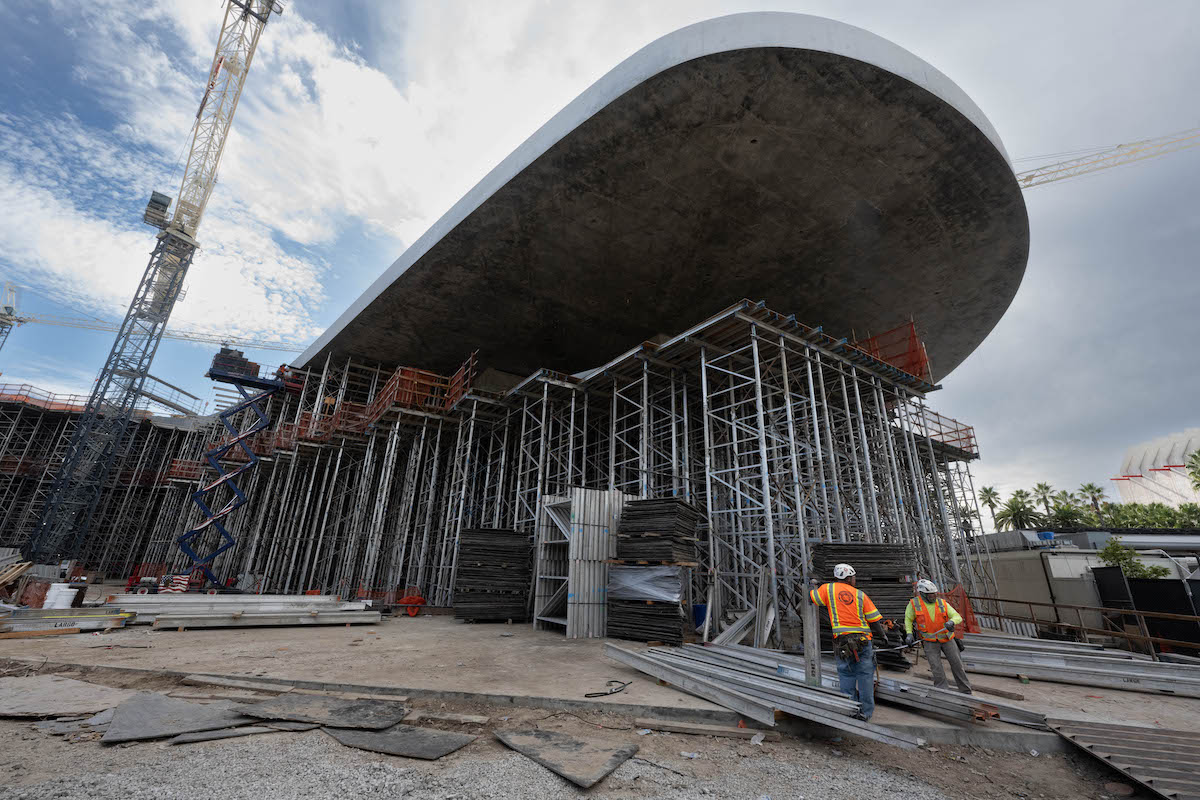
So what is the final color and texture that visitors are going to see?
Peter's vision and his style is very much about raw, honest materials. The concrete itself has no additives, no cover up. There's no added color. It's a natural gray concrete color selected from many samples to be the specific tone and texture desired. And what we liked about that is you can see more of the hand of the craftsman in the work. This building is a concrete sculpture and the craftspeople are the artists. We always talk about this “hand of the craftsman.” So you'll see seams, you'll see a fastener or two, and every single line and bump was methodically drawn, detailed, coordinated by Peter’s team in Switzerland, the architecture (SOM) team here, and our concrete partner Largo Concrete. Each one of those is intentionally placed such that you can see the way things fit together.
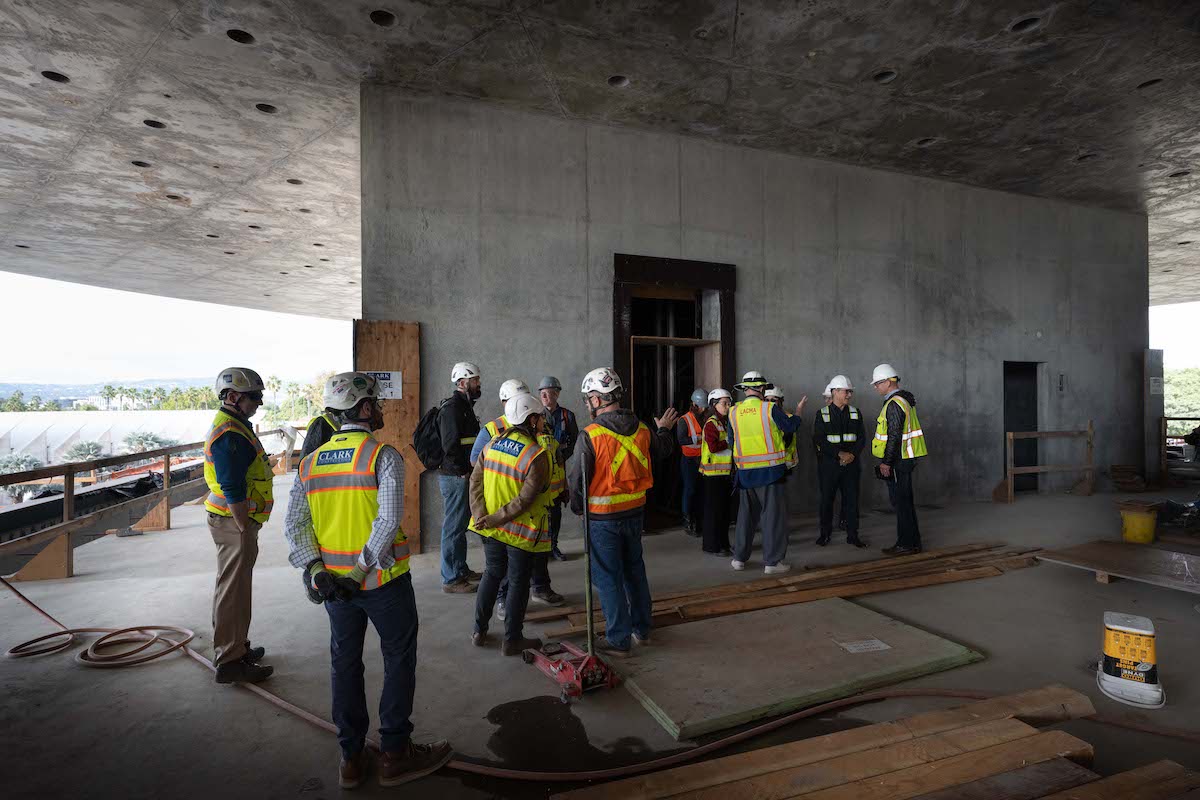
Are there any other details or points of interest visitors will see in the final building?
We're talking about the aesthetic of the concrete structure here, but I would be remiss if I didn't say a few things about the sophistication of the structural engineering and design. The building has no columns! Instead, there are seven 30-foot-tall park-level pavilions that support the entire exhibition space. That's three football fields long with supporting cantilevers that hold people, glass, artwork—cantilevers that are 60 feet long. Being able to achieve and balance the structural and architectural requirements, it's a feat unto itself. All the respect in the world to the SOM structural engineering team.
One of the details that Peter came up with later in the process and that we really like is the triangular seam pattern you'll see on every ceiling. These are equilateral triangles that fit together perfectly from the north tip to the south tip of the building. You'll see this triangle pattern repeated again and again, while coordinating specifically with all of the lighting, sprinklers, and air-movement perforations.
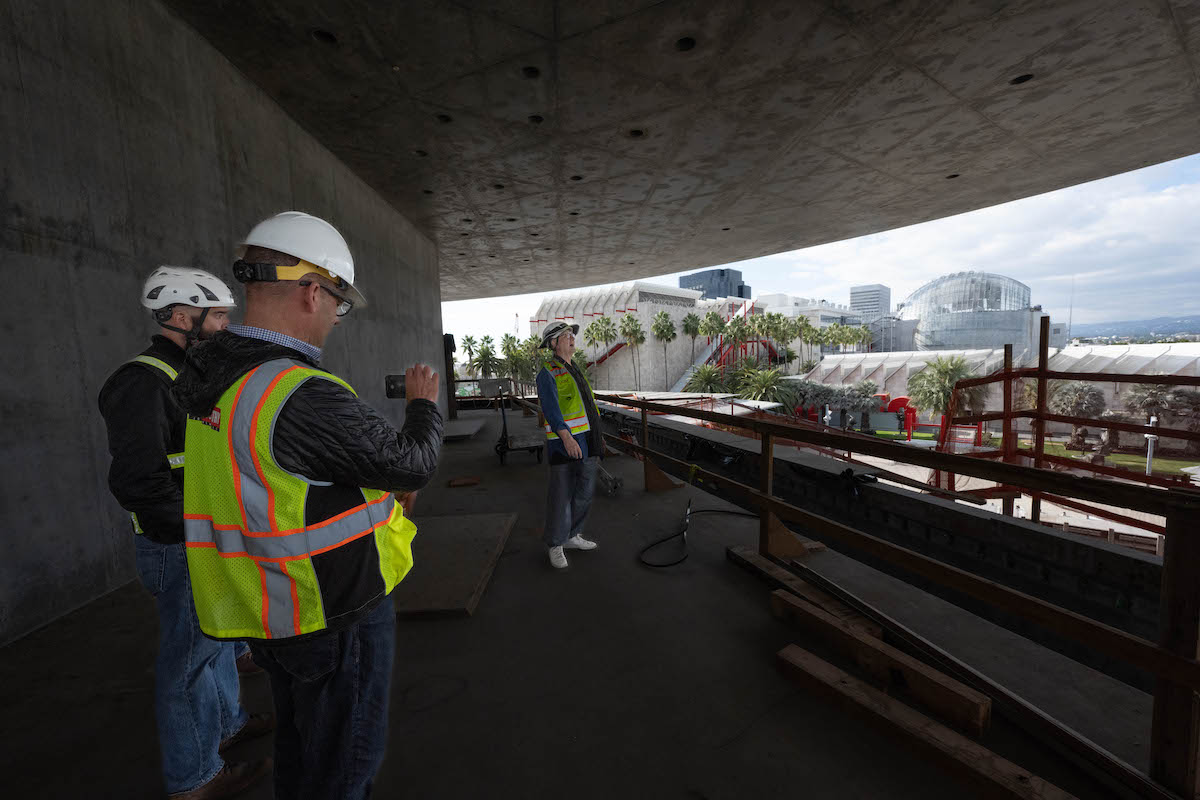
Have the concrete details changed over time?
Peter is known for having a dynamic vision. He and his team are here at least once a quarter, if not more often, so the craftspeople, carpenters, laborers, cement finishers—they have Peter's trust. I remember a time when, reviewing our final mock-up, he was deciding between incorporating some type of black oxide color additive to this concrete mix or leaving it in its natural color. And Peter said he had originally added the colors because he was worried, but the team had proven that they were some of the best and most capable so he was no longer scared and we do not need the color. He removed the color and made it as natural and honest as it can be, seeing as much of the material as possible.
It's all part of the story, right? One of the things about concrete is that it retains moisture over time. So even all the way up to 500 years later, the moisture content of the concrete will continue to change. Over time, that does mean that the appearance will continue to change and evolve. So while what we see right away is going to be somewhat of an indication of what it will look like at the end of the day, it’s just a part of the story. There's more to go. There's more story coming.



